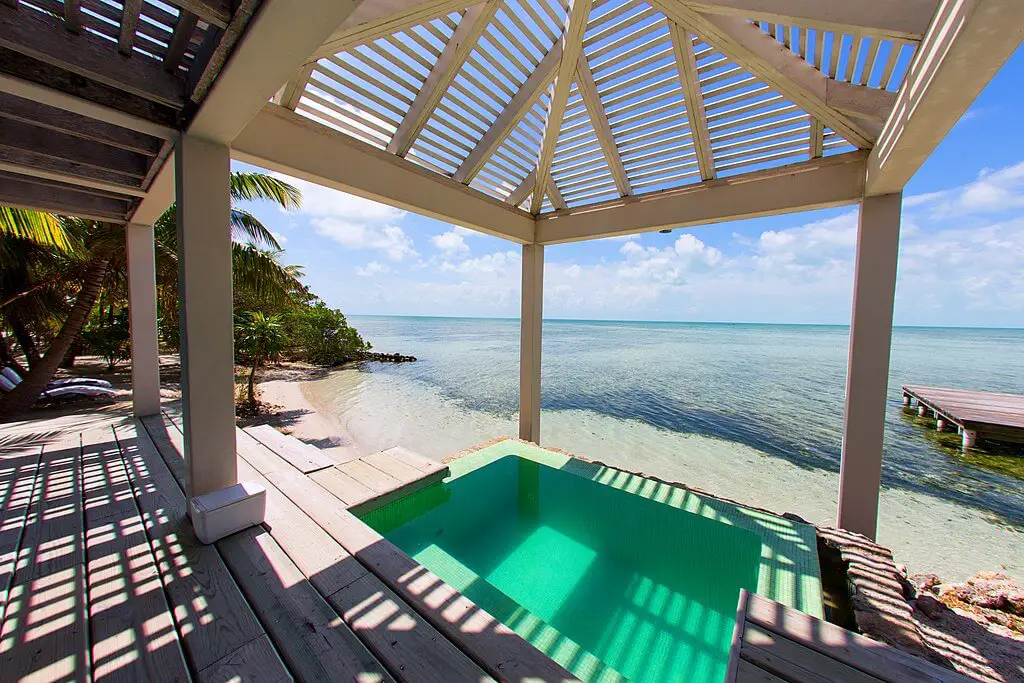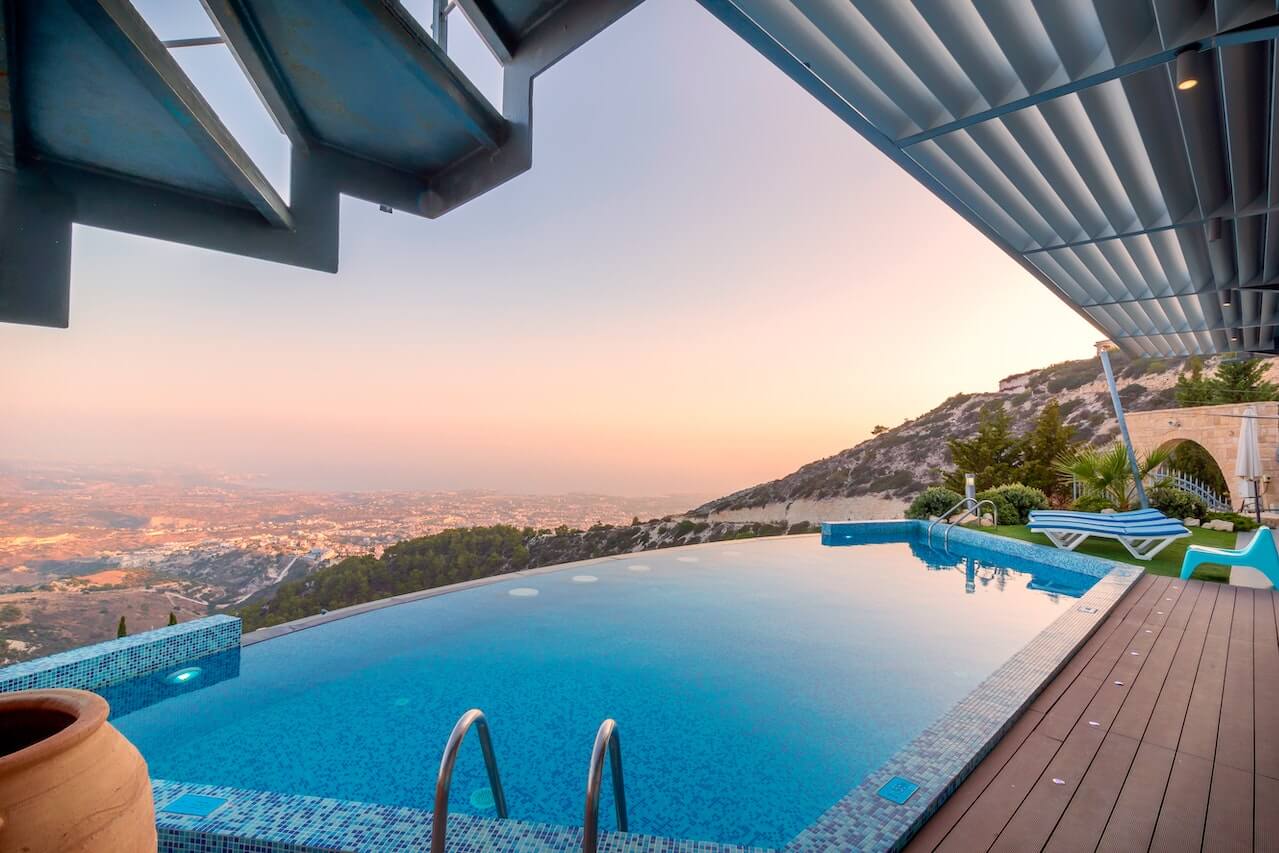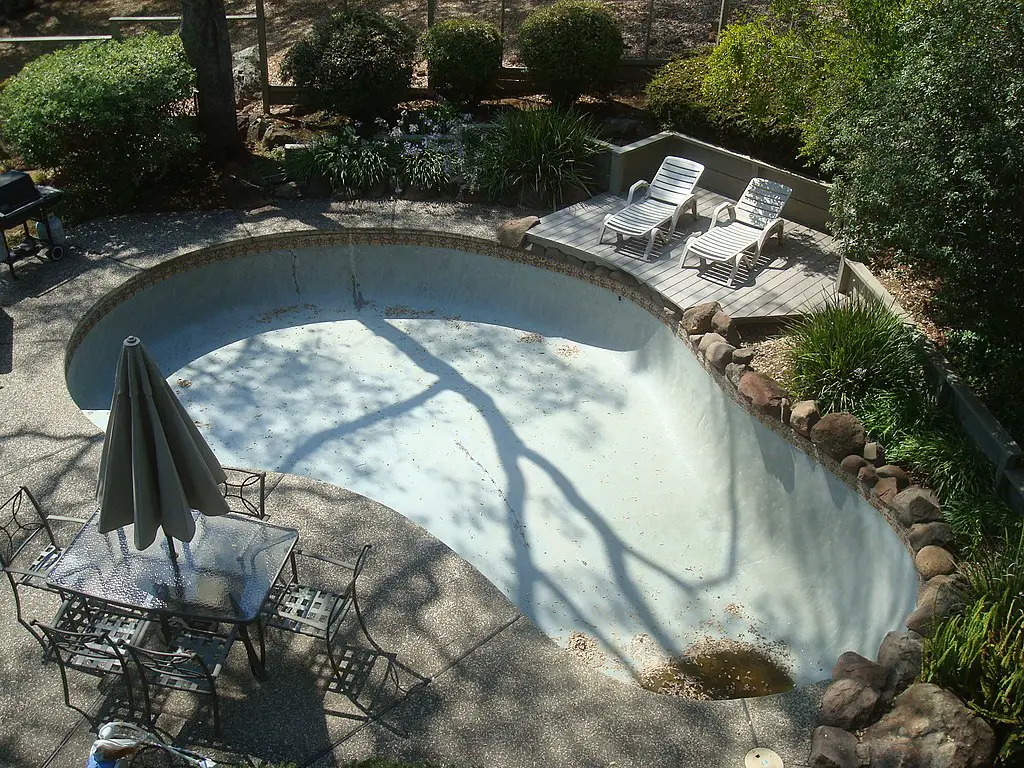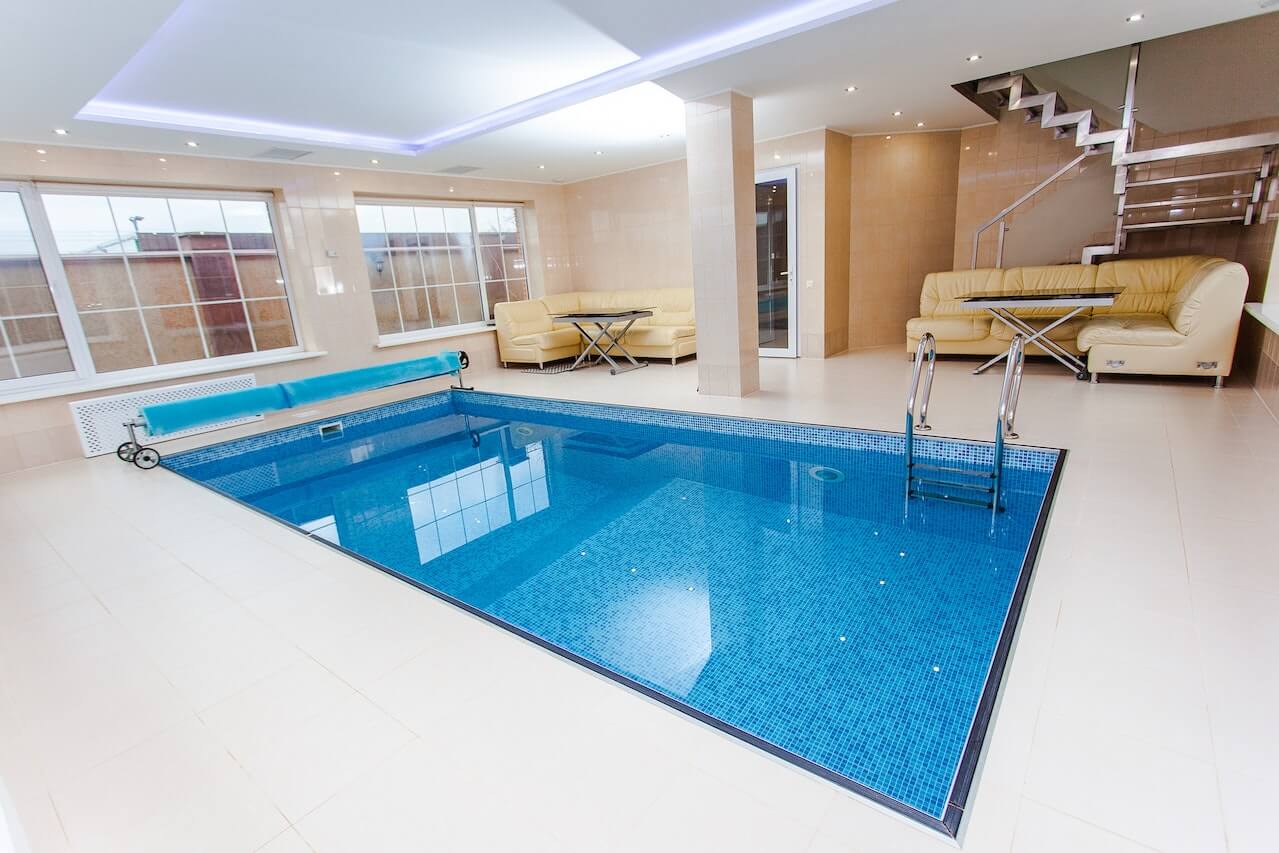Are you considering adding a pool to your backyard, but feel overwhelmed by the different options available? Plunge pools and swimming pools are two popular choices, each with their own advantages and disadvantages.
Plunge pools are smaller and more affordable, making them a great option for those with limited space or a tighter budget. They also require less maintenance and can provide health and wellness benefits such as hydrotherapy. On the other hand, swimming pools offer more versatility for exercise and entertaining guests, but come with higher costs and maintenance requirements.
To choose the right pool for your lifestyle, consider factors such as space, cost, and intended use. Keep reading to learn more about the pros and cons of each option and how to assess your needs to make the best choice for you.
The Basics of Plunge Pools and Swimming Pools
Plunge Pool

A plunge pool, also known as a dipping pool, is a small, compact pool design that provides many of the benefits of a traditional swimming pool but requires significantly less space.
Plunge pools typically have a uniform depth and are sometimes outfitted with seats along the sides. These pools are ideal for cooling off on hot summer days, relaxing, or as a hydrotherapy option if connected to a pool heater.
Not only do they save space, but plunge pools tend to blend in seamlessly with your backyard’s natural surroundings. They enhance the aesthetics of your landscaping, making them an attractive feature in any outdoor space.
Swimming Pool
 Swimming pools, on the other hand, offer a larger space for aquatic activities, exercise, and relaxation. You can actually do aquatic exercises and swim in a larger pool, whereas it is not possible in a small plunge pool.
Swimming pools, on the other hand, offer a larger space for aquatic activities, exercise, and relaxation. You can actually do aquatic exercises and swim in a larger pool, whereas it is not possible in a small plunge pool.
You can find swimming pools in various styles, sizes, and depth profiles, typically featuring a shallow end and a deep end. A swimming pool is designed to accommodate more people and generally offers more versatility and options for use compared to a plunge pool.
Plunge Pool vs Swimming Pool Comparison
Size and Space Requirements
Plunge pools are smaller than regular swimming pools, typically measuring 8×8 feet to 8×16 feet and around 4-8 feet deep.
Despite their small size, they can still provide a variety of benefits for homeowners. For example, their compact size makes them ideal for those who want to enjoy the benefits of a pool without taking up too much space in their backyard.
Space should be an issue, as plunge pools can be installed in a variety of locations, including rooftops, balconies, and even indoors, making them a versatile option for homeowners who want to enjoy a pool year-round.
On the other hand, while swimming pools do require more space, they also offer more flexibility in terms of design and functionality.
Homeowners can choose from a variety of sizes, shapes, and materials to create a custom pool that meets their specific needs and preferences. Additionally, swimming pools can be used for a variety of activities, including exercise, relaxation, and entertaining guests.
Health and Fitness Benefits
With regards to health and fitness, plunge pools may not offer the same opportunities for swimming and exercise as a full-sized swimming pool, but they can still provide a range of health and fitness benefits.
For example, the compact size of a plunge pool makes it ideal for aquatic exercises such as water aerobics, which can help improve cardiovascular health, build muscle strength, and increase flexibility.
In addition to exercise, plunge pools can also offer therapeutic benefits such as hydrotherapy. With water temperatures ranging from 50°F to 104°F, plunge pools can be used for cold and hot water therapy, which can help reduce inflammation, alleviate pain, and promote relaxation.
Hydrotherapy can also help improve circulation, boost the immune system, and reduce stress levels, making it a great option for those looking to improve their overall health and well-being.
Some plunge pools can be equipped with various features such as massage jets, which can provide a relaxing and rejuvenating experience. These jets can help relieve tension in the muscles, reduce stress, and promote relaxation, making them a great option for those who want to unwind after a long day.
Entertaining Guests
 While swimming pools are ideal for hosting larger gatherings, plunge pools can still provide a great space for entertaining guests in a more intimate setting. The compact size of a plunge pool creates a cozy atmosphere that encourages conversation and socializing, making it a great option for small groups of friends or family.
While swimming pools are ideal for hosting larger gatherings, plunge pools can still provide a great space for entertaining guests in a more intimate setting. The compact size of a plunge pool creates a cozy atmosphere that encourages conversation and socializing, making it a great option for small groups of friends or family.
Not only can they provide a relaxing space for socializing, but plunge pools can also be equipped with various features that can enhance the overall entertainment experience. For example, built-in seating areas, waterfalls, and lighting can all create a fun and inviting atmosphere that guests are sure to enjoy.
Want to impress your guests? Plunge pools can be designed to complement the overall aesthetic of a backyard or outdoor space. By incorporating elements such as landscaping, hardscaping, and outdoor furniture, you can create a cohesive and inviting outdoor oasis that is perfect for entertaining guests.
Of course, swimming pools can do these things too – on a larger scale and arguably better. But a plunge pool owner can still be a great host.
Price and Installation Costs
Plunge pools are generally cheaper than standard swimming pools due to their smaller size, requiring less materials and labor for installation, though they are not exactly cheap. Still, this cost advantage makes them a more affordable option for homeowners on a tighter budget.
According to Bob Vila, the cost to install a plunge pool ranges from $10,000 to $50,000, with the national average at $20,000. However, the cost to prepare land for your plunge pool ranges from $1,500 to $5,000, and building permits for plunge pools typically cost $400 to $1,800, depending on where you live.
The costs to install and maintain an inground swimming pool tend to be higher than those for an inground plunge pool, as they require more water, materials, and ongoing maintenance efforts. A typical inground swimming pool costs between $20,000 to $100,000, with the average cost being around $36,677.
Maintenance and Upkeep

Plunge pools require less maintenance than regular swimming pools due to their smaller size and lower water volume.
The reduced water volume means that fewer chemicals are required to keep the water clean and balanced, resulting in lower associated running costs for pumps, filters, and heaters. This not only saves homeowners money on maintenance costs but also makes maintenance and upkeep easier and less time-consuming.
Furthermore, plunge pools are also easier to clean due to their smaller size. They can be cleaned with a net and a handheld pool vacuum, which is much simpler than the more complex cleaning procedures required for larger swimming pools. This means that homeowners can spend less time on maintenance and more time enjoying their pool.
On the other hand, regular swimming pools require more time and effort for cleaning and upkeep due to their larger size and greater water volume. This often requires the use of more chemicals and more complex cleaning procedures, which can be time-consuming and costly.
Environmental Impact
For those wanting to be more eco-friendly, plunge pools offer several environmental benefits compared to regular swimming pools.
The smaller water volume of a plunge pool means that less water is required to fill and maintain the pool, resulting in reduced water consumption. This not only saves water but also reduces the amount of energy required to heat and circulate the water, resulting in lower energy consumption and associated greenhouse gas emissions.
Due to their smaller size, plunge pools also require fewer chemicals to maintain water quality. This means that fewer chemicals are released into the environment, resulting in a smaller ecological footprint.
Furthermore, the compact size of plunge pools means that they can be installed in a variety of locations, including rooftops, balconies, and small backyards. This reduces the need for large amounts of land and can help preserve natural habitats and ecosystems.
Pros and Cons
Plunge Pool Advantages and Disadvantages
Plunge pools are a popular option for many because of their smaller size and lower maintenance requirements. One of the main advantages is that they take up less space, making them a great choice if you have limited backyard space or want to fit a pool in a smaller area.
These pools are also more cost-effective in terms of construction and ongoing expenses. They require fewer materials and labor for installation, as well as fewer chemicals to keep the water clean. Additionally, plunge pools have lower running costs for pumps, filters, and heaters.
However, one main disadvantage of plunge pools is their limited size which makes them unsuitable for swimming or hosting larger gatherings. They are more suited for wading, lounging, and aquatic rehabilitation.
Swimming Pool Advantages and Disadvantages
Swimming pools offer various advantages, including the ability to swim laps, host larger gatherings, and have more space for aquatic activities. Additionally, they can add value to your property and create a stunning focal point in your outdoor area.
However, swimming pools come with some drawbacks. They require more space, which might not be available in every yard. The construction process can also be more expensive due to the need for larger materials, labor, and equipment.
Maintenance-wise, swimming pools demand more time and effort. They need regular cleaning, filter checks, and chemical adjustments to keep the water safe and clean. This could result in higher ongoing costs compared to plunge pools.
Lastly, swimming pools are more likely to require additional safety measures, such as fencing or alarm systems, to comply with local regulations and prevent accidents.
Choosing the Right Pool for Your Lifestyle
Factors to Consider
When deciding between a plunge pool and a swimming pool, you need to consider several factors. Some of these factors include space, cost, and intended use.
- Space: Plunge pools are ideal for outdoor areas with limited space, as they can be as small as 8-10 feet square. Swimming pools, on the other hand, require more room.
- Cost: Building a plunge pool is generally cheaper than installing a regular swimming pool, as there are fewer materials needed and a smaller area to clear. A small plunge pool measuring 6 feet in diameter may range from $10,000 to $15,000, while a larger 10- to 12-foot-diameter pool may cost more. A regular swimming pool can be two or three times more expensive.
- Intended Use: Plunge pools are primarily for wading and cooling off, while swimming pools are for more active use, such as swimming laps or playing pool games.
Assessing Your Needs
To choose the right pool for your lifestyle, assess your specific needs and desires for the pool. Consider these questions:
- Do you have limited outdoor space? If so, a plunge pool may be the better choice.
- Is cost a significant consideration? Plunge pools are often more affordable than swimming pools.
- Do you prefer a pool for relaxation and cooling off, or for swimming and exercise? Plunge pools are ideal for relaxation, while swimming pools offer more versatility for exercise and play.
Ultimately, the best pool for you will depend on factors such as space, cost, and how you plan to use the pool. Take the time to carefully consider these aspects and assess your needs to ensure you make the right choice for your lifestyle.


